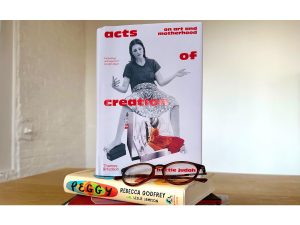The Journey from Commercial to Art Photography
Daphna Laszlo-Katzor, a distinguished graduate of the photography department at The NB Haifa School of Design, has a rich background in commercial photography. Her career began with a focus on fashion and portrait photography, working for one of Israel’s leading newspapers. This experience expanded when she established her own advertising-photography studio. Despite her commercial success, it was a series of dramatic life changes that propelled her into the realm of art photography. These personal upheavals ignited a powerful need for self-expression, which she found through her lens.
Elements from her years in advertising and journalism subtly permeate her artistic work. Her sculptures and photographs often reflect principles of perspective, movement, and dynamic energy, capturing fleeting moments and dramatic narratives. This background in commercial photography has provided her with a unique toolkit that enriches her artistic creations. The skills honed in these fields are seamlessly woven into her art, creating a vivid tapestry that narrates the story of her life through surrealistic digital art.
Laszlo-Katzor’s digital art is deeply influenced by the surrealism movement, serving as a medium to articulate the complex stories of her life. Through her work, she explores various episodes and experiences, translating them into visual narratives that are both personal and universal. This approach allows her to create pieces that are not only visually striking but also rich with emotional and psychological depth.
Daphna Laszlo-Katzor: Inspiration and Recognition
The transition from commercial to art photography was catalyzed by a need for deeper self-expression, but it was recognition in the art world that truly launched Laszlo-Katzor’s career. Winning first prize in the 2015 international Primary Colors photography competition held by The Gala Awards was a pivotal moment. This accolade affirmed her artistic vision and opened new avenues for creative exploration. It marked her entry into the world of art, providing both validation and visibility.
Her artistic style is characterized by the integration of digital photography and computer graphics. Laszlo-Katzor’s works are complex compositions made up of numerous photographic layers. These photographs, taken both in her studio and in natural environments, are meticulously combined with graphic elements to create surrealistic scenes. This technique allows her to blend fact and fiction, creating imagined realities that are rich with cultural and traditional influences.
In her art, Laszlo-Katzor often examines themes that reflect the human condition, society, and culture. Her work invites viewers to appreciate classical aesthetics while engaging with deeper, often unsettling truths. The initial beauty of her pieces draws viewers in, but a closer inspection reveals allegorical content that critiques contemporary life. This duality in her work—combining visual allure with critical commentary—demonstrates her ability to convey complex messages through her art.
The Creative Process and Influences
Laszlo-Katzor’s creative process is as intricate as her finished pieces. Her workspace is a hybrid of traditional studio and digital lab, where she meticulously edits and merges photographs to create her unique compositions. Outdoor photo shoots provide raw material, while studio sessions allow for controlled, detailed work. The computer and various editing programs are her primary tools, enabling her to transform photographic elements into surrealistic artworks.
Distractions are handled with disciplined focus; once she envisions a piece, the execution flows naturally. The digital medium, with its endless possibilities, offers her a limitless canvas. This allows her to experiment with techniques and create the detailed, layered images that define her style. The integration of different media—photography, digital editing, and sculpture—further enriches her artistic expression.
Her artistic influences are varied, reflecting a deep appreciation for both historical and contemporary artists. The baroque and renaissance periods have left a significant mark on her work, with artists like Caravaggio, Rafael, and Artemisia Gentileschi being notable inspirations. In the realm of photography, figures such as Bill Brandt, Diane Arbus, and Guy Bourdin have also influenced her. These diverse influences contribute to the richness and depth of her artistic vision, allowing her to draw from a broad spectrum of styles and techniques.
Daphna Laszlo-Katzor: Meaningful Works and Future Aspirations
One of Laszlo-Katzor’s most significant pieces is inspired by the work of German artist August Friedrich Schenck, particularly his piece “Anguish.” This artwork resonates deeply with her due to its allegorical nature, blending surrealism with real-world commentary. For Laszlo-Katzor, Schenck’s work embodies a powerful expression of emotion and opinion, reflecting on historical events and societal issues. This piece exemplifies her own approach to art, where surreal elements serve to underscore deeper, often poignant truths.
Her preferred medium, digital photography, has evolved from her background in journalism and advertising. Initially, she focused on portrait and fashion photography, but the digital medium’s flexibility and boundless possibilities captivated her. Alongside her photographic work, she engages in clay sculpture, sometimes creating bronze casts of her pieces. This combination of media allows her to explore her artistic vision from multiple angles, adding a tangible dimension to her otherwise digital creations.
Looking forward, Laszlo-Katzor dreams of a project centered on “Peace and Fellowship.” She envisions a collaborative effort involving artists from around the globe, working across various media. This ambitious project aims to promote unity and understanding through the universal language of art. It reflects her belief in art’s power to bridge divides and foster a sense of global community. Through this project, she hopes to create a lasting impact, using her artistic talents to champion a message of harmony and cooperation.




